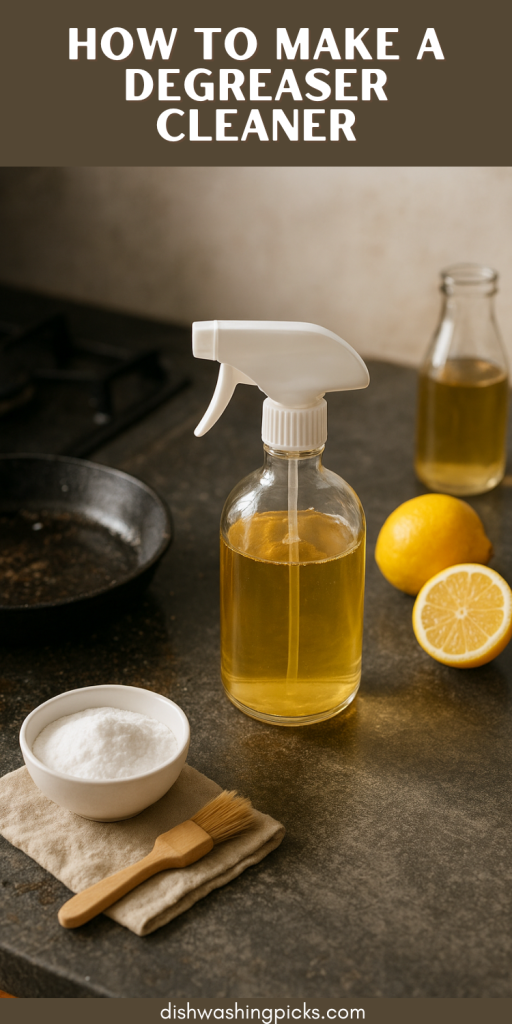
Ever tackle a greasy stovetop or grimy kitchen cabinet and think, “Ugh, there’s got to be something better than scrubbing forever”? That’s where a degreaser comes in. The good news? You don’t have to buy harsh chemicals—you can make your own, right at home. Let’s dive into the magic of DIY degreasers.
Why You Need a Degreaser
Grease is tricky. It clings to surfaces like it has a personal vendetta against your cleaning cloth. A degreaser helps cut through the stubborn stuff without requiring elbow grease that leaves your arms sore.
Think about it: frying pans, range hoods, stovetops… all that built-up oil and grime. Wouldn’t it be nice to just spray something on and watch it vanish?
- Cuts through oil and grease fast
- Safe and non-toxic when homemade
- Cost-effective—uses ingredients you probably already have
Ingredients You’ll Need
Here’s what makes a DIY degreaser super effective:
- White vinegar – a natural grease-fighter
- Baking soda – scrubbing power without scratching
- Dish soap – for extra grease-cutting ability
- Warm water – to mix everything
- Optional: essential oils like lemon or tea tree for a fresh scent and extra cleaning power
Step-by-Step Guide to Making Your Degreaser
- Mix the Base
In a spray bottle, combine 1 cup of warm water, 1 cup of white vinegar, and 1 tablespoon of dish soap. - Add Baking Soda
Slowly add 2 tablespoons of baking soda. Be careful—it fizzes a bit! This is totally normal. - Optional Scent Boost
Add 5–10 drops of essential oil if you want a pleasant aroma while cleaning. - Shake and Store
Shake gently to mix and store in a spray bottle. Keep it in a cool place, ready for action.
How to Use Your Degreaser
- Stovetops: Spray directly, let sit 5 minutes, wipe with a damp cloth.
- Cabinets and Counters: Spray, let sit a couple of minutes, then wipe clean.
- Oven Hoods and Appliances: Spray, scrub lightly with a sponge, rinse with water.
Pro tip: For really stubborn spots, sprinkle a little baking soda directly on the surface, spray the degreaser, and let it sit before scrubbing.
Tips and Tricks for Maximum Effectiveness
- Always do a small patch test on delicate surfaces
- Shake before each use to keep the ingredients active
- Use microfiber cloths for streak-free results
- Rinse thoroughly when cleaning surfaces that touch food
Imagine spraying this on that greasy stove after dinner and seeing the gunk disappear with almost zero effort—satisfying, right?
Wrapping It Up
Making your own degreaser is simple, cheap, and way more enjoyable than fighting stubborn grease with just a sponge. Plus, you control the ingredients, so you know it’s safe for your family and the environment. Next time you face a greasy mess, skip the store-bought chemicals and whip up this DIY degreaser—it’s a game-changer.
